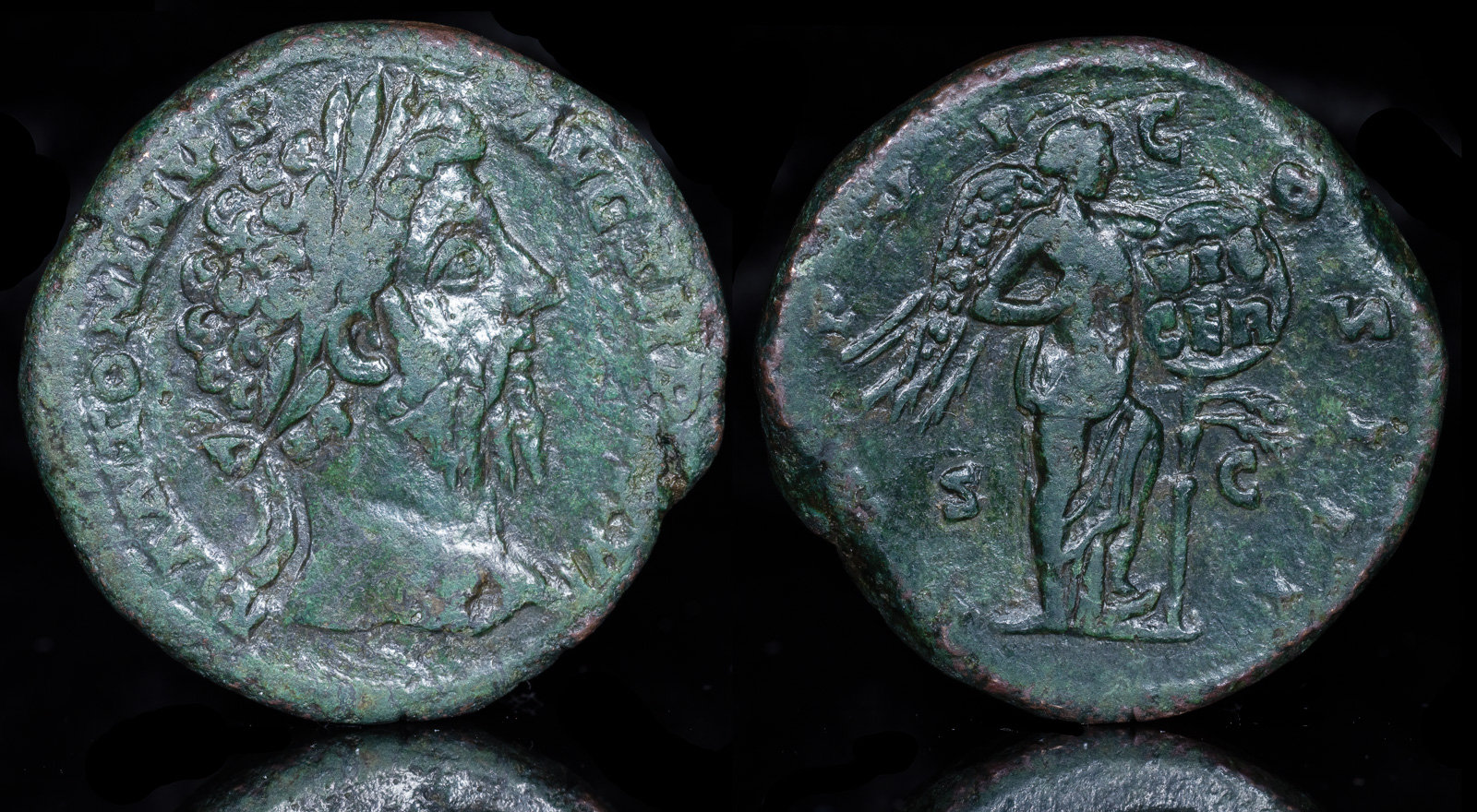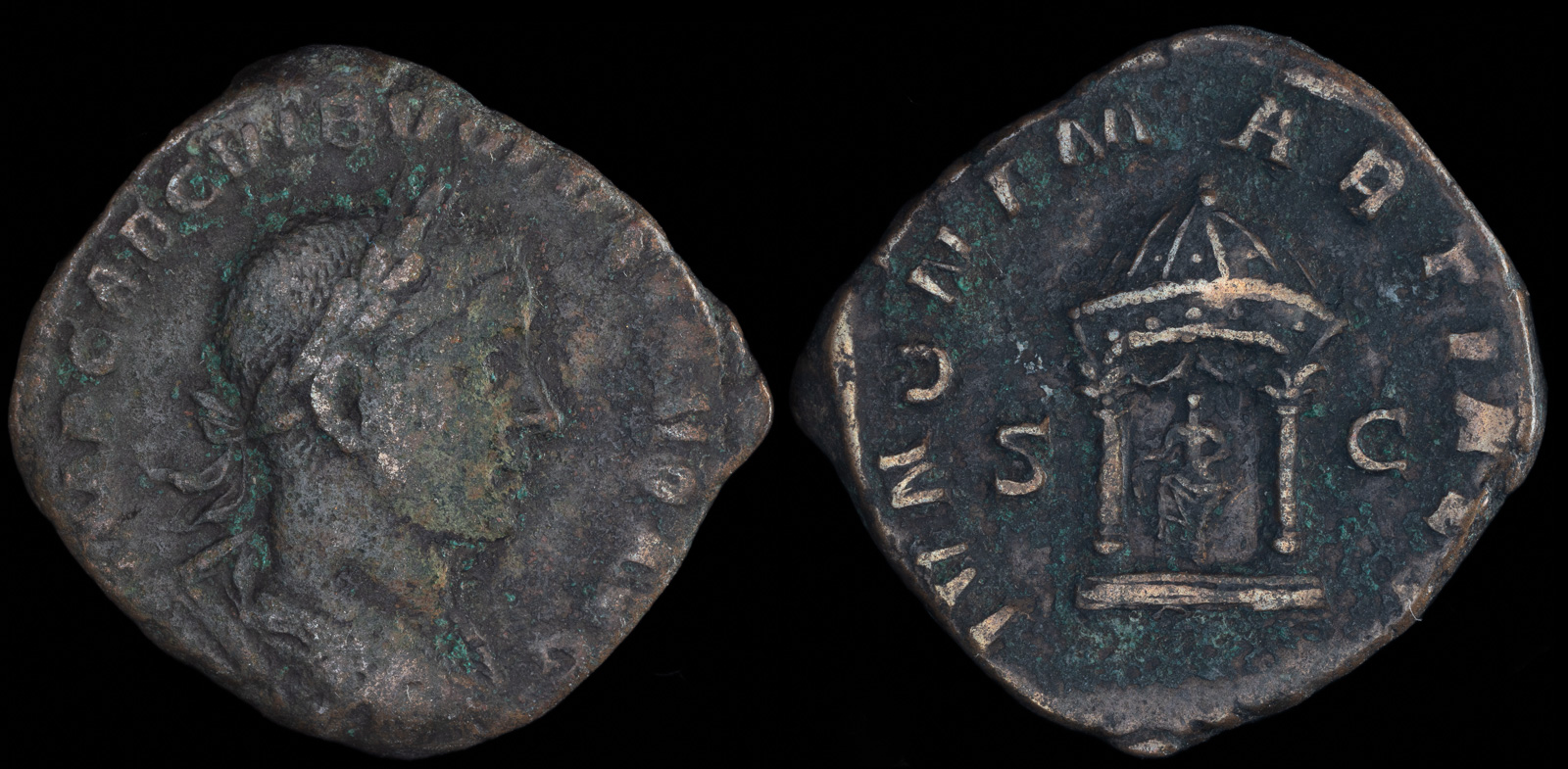Sestertius
View All Tags
During the Republican period, the sestertius was minted primarily in silver, though it was later produced in bronze during the Empire, especially during the reign of Emperor Nero (54–68 CE). Its value and weight were subject to adjustments over time, and its role in the economy grew as the empire expanded and became more complex. The coin was often used in larger transactions and served as a standard for wealth and status. While it was not the smallest coin in circulation, it was widely used by Romans for both commerce and in civic contexts.
The sestertius had significant symbolic and commemorative value, particularly during the Imperial era. Emperors frequently used the coin to celebrate military victories, public works, and their own achievements. Coins featuring portraits of emperors, alongside images of gods, cities, and historical events, were minted to reinforce the emperor’s legitimacy and to serve as a tool for propaganda. The reverse side of the coin often depicted scenes of Roman victories or the emperor’s virtues, strengthening the ties between the ruler and the people.

Marcus Aurelius AE Sestertius / Victory over Germany
172 CE
31.20mm 27.18g
Obverse: M ANTININVS AVG TR P XXVI, laureate head right
Reverse: IMP VI COS III, Victory standing right hanging shield inscribed VIC/GER on palm tree; S-C across fields
RIC III 1029 Rome
Ex CNG 2013

Volusian
251-253 CE
Æ Sestertius 29mm, 16.91g, 12h
Obv: Laur., dr., and cuirassed bust right
Rev: Juno seated facing, holding patera and scepter, within domed distyle temple
RIC IV 253a; Cohen 46